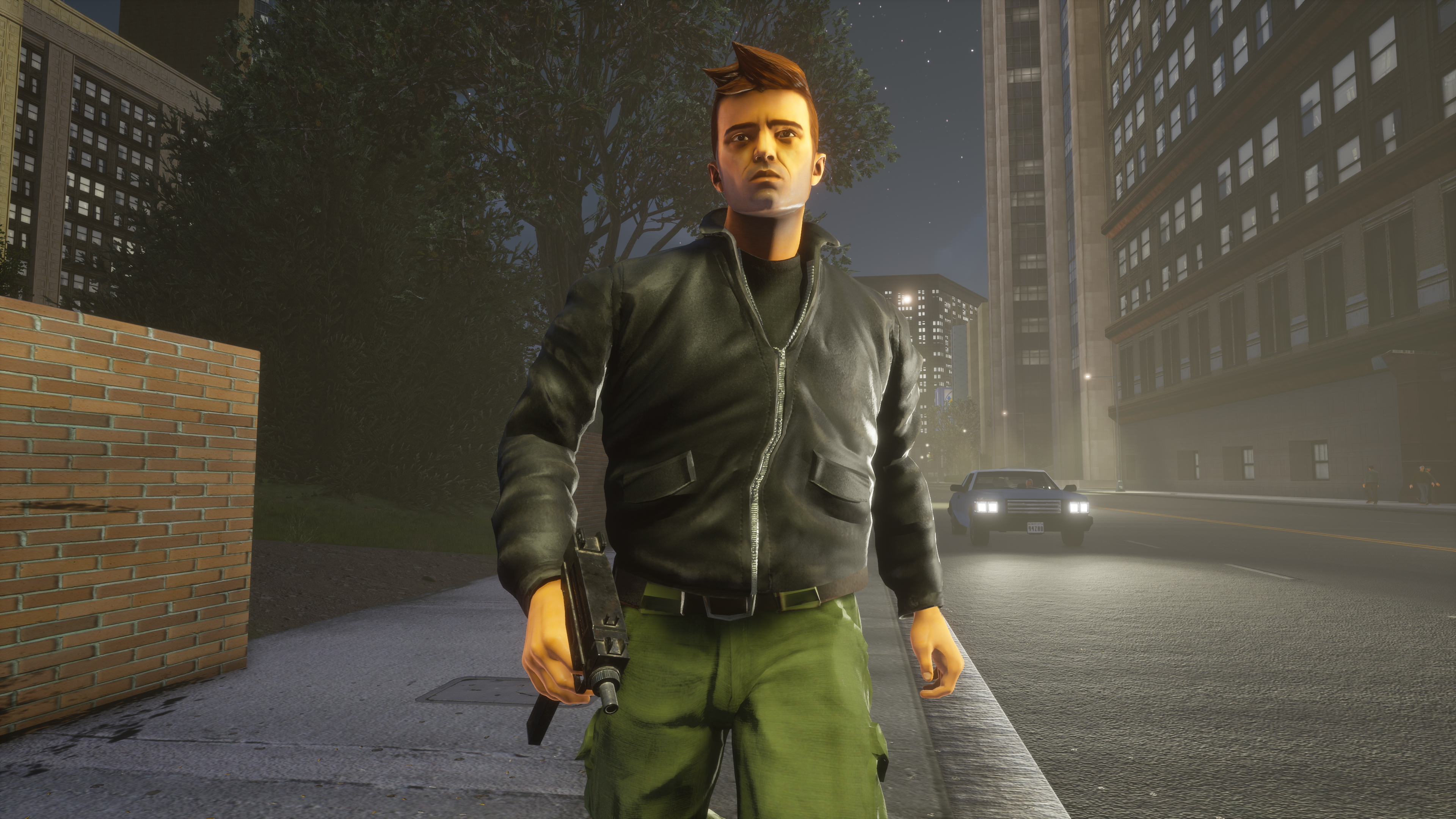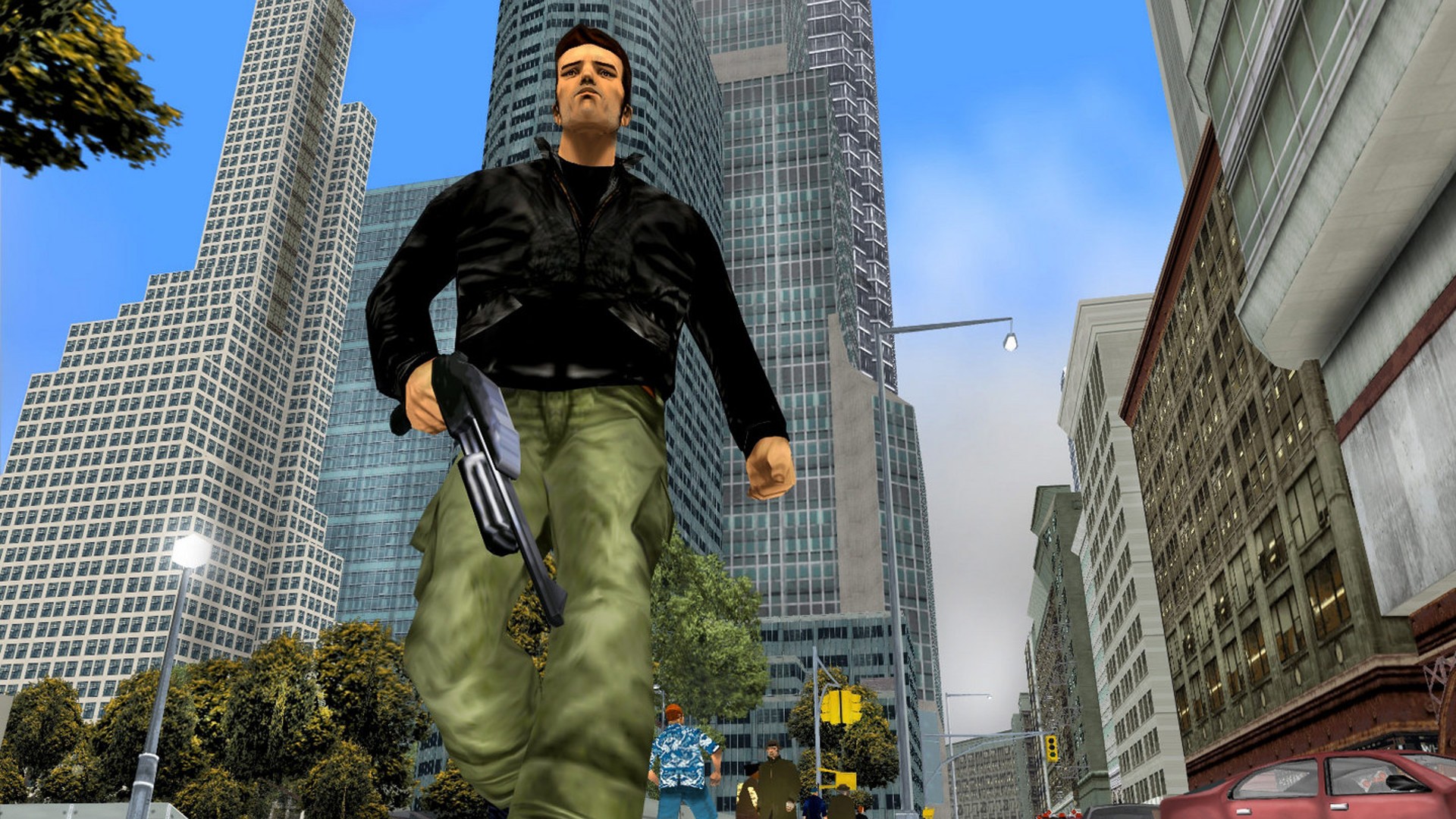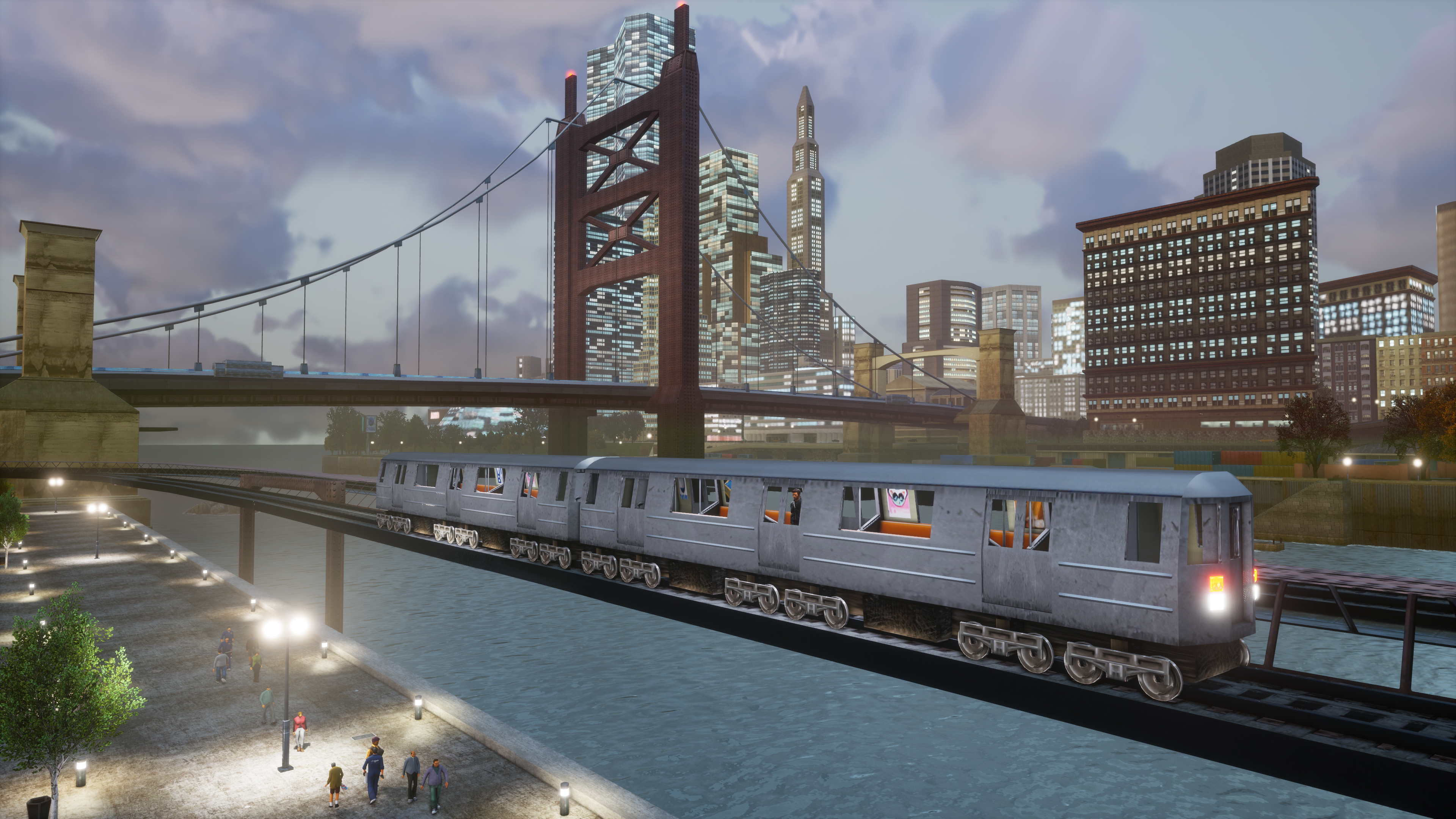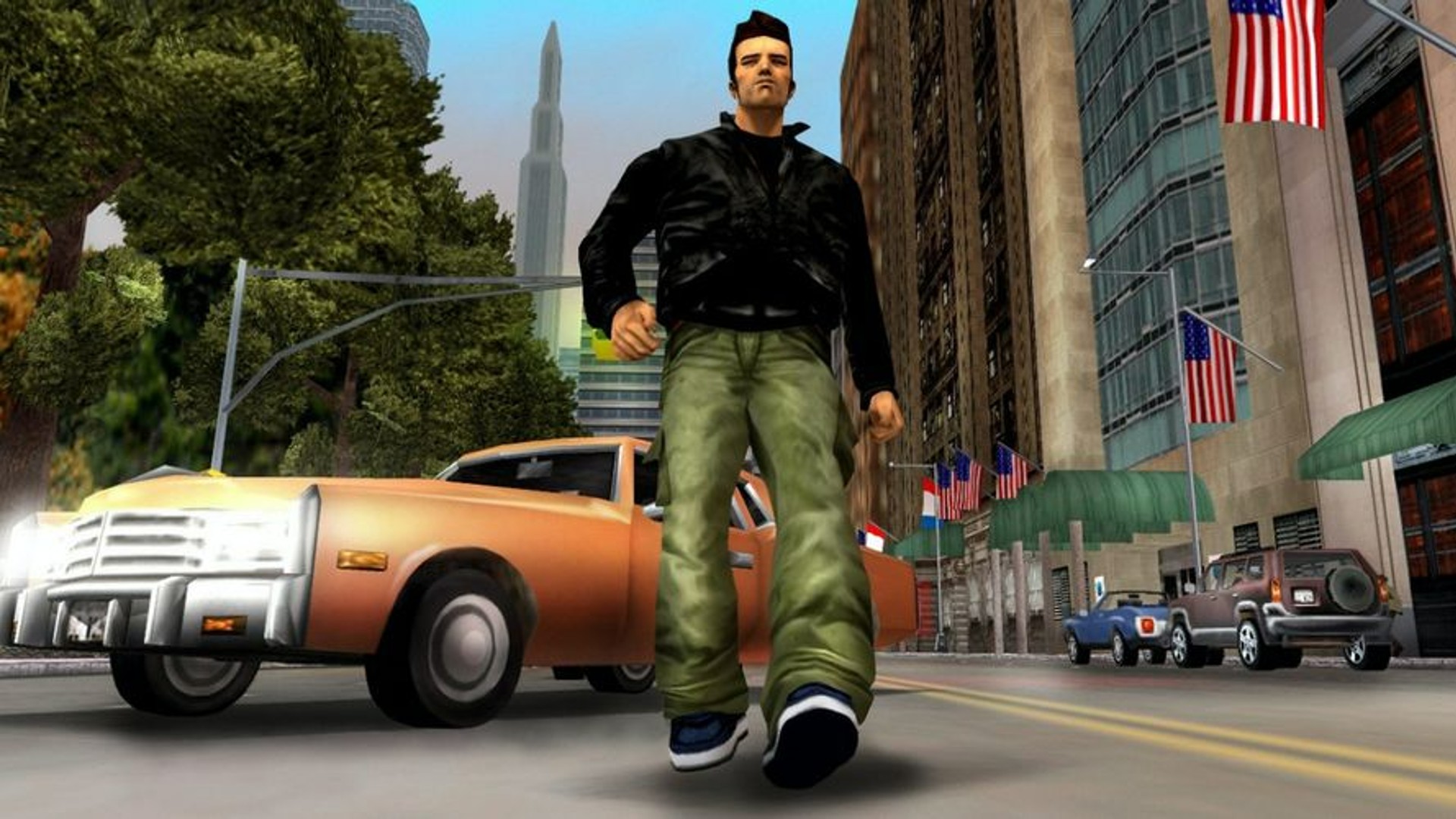20 years later, Rockstar reflects on how GTA 3 "showed us the first glimpse of what was possible"
Scale, freedom, and a Dreamcast prototype – how GTA 3 changed open world games

"So, tell me about GTA 3," said my friend Gav, as we walked home through the Glasgow housing scheme we hung around in as teenagers. "Aw, mate," I said. "It's like the last games, right – gangs, guns, stealing cars, missions, all of that stuff. But it's 3D." Silence followed, save for the patter of rain on a typically wet and windy October evening in the west of Scotland. "What, actual 3D – not 3D like Final Fantasy, but, like in Tomb Raider?" I considered my next words very carefully. "No mate, even better." Another pause. "I'm sold already, mate," said Gav. "I just need to get myself a PS2."
It's been 20 years since that exchange, and 20 years since Grand Theft Auto 3 changed the landscape of open world video games. At 15 years old, at a time when gaming was still viewed by many as niche, my core circle of friends had begun turning their heads away from consoles and control pads, and towards teenage indulgence. GTA 3, though, was the game that pistol whipped them back to their screens on account of its variety, scale and possibility – that this world was real, ripe for exploring and manipulatable to their every whim.
"I remember knowing it was something we thought was cool – I remember enjoying just messing about in our world and interacting with the ambient world and the cops," says Aaron Garbut, the head of development and co-studio head at Rockstar North who's worked on every Grand Theft Auto since the series' inception. "It felt new – there was a level of immersion in the world that felt like it happened around you rather than for you, like you could just have fun in, without following a path defined by missions or story. Those things were there too, but at its heart it was freedom that felt exhilarating."
If I can make it here


Meet the GTA 3 players who've spent a decade playing pass-the-pad to 100% the game
Open world games had existed long before GTA 3, of course, not least in its top-down series forerunners, Grand Theft Auto (1997) and GTA 2 (1999). Released on this side of the new millennium in the US and Europe, Yu Suzuki's Shenmue was an incredible feat of sandbox storytelling, as was its sequel, but its exclusive ties to Sega's ill-fated Dreamcast console saw it achieve long-term cult status over mainstream acclaim. By late 2001, Japan had seen the arrival of big-budget, big-world games such as Final Fantasy 10 and Devil May Cry, and was on the cusp of receiving Metal Gear Solid's much-anticipated sequel, MGS2: Sons of Liberty, each of which wouldn't arrive on western shores till later that year, or into 2002.
Launched on October 22, 2001, you could say Grand Theft Auto 3 arrived in the west at the perfect time – at least from a marketing standpoint. For Garbut, though, making a game that he and his peers wanted to play themselves is what has always driven him creatively.
"We were making the game we had always wanted to play; we took the earlier GTA's as a guide, but we just ran with things, excited by the possibilities and iterating organically as we played and felt things evolve," says Garbut. "But there is never any way to know how others will feel. We had a fairly subdued E3 before release and that was hard, though it gave us some fuel to push the game further. We just made what we thought was a good game, we poured our heart and soul into it as a group and so it was incredibly rewarding to see the response from players."
"Sam (Houser, Founder of Rockstar Games) was always keen to see the Grand Theft Auto series move to 3D, but there wasn't a plan as much as a desire. The original team (who'd worked on GTA and GTA 2) had tried pushing the camera behind the car a little in some tests for GTA 2, but there were a few of us who were really excited by the possibilities of freely modeling a world that would stream in as needed and moving the camera right into it. We did some prototypes on the Dreamcast, and through that, got the greenlight to start GTA 3. So as the original team finished GTA 2, we formed a new team around the development of GTA 3."
Sign up to the GamesRadar+ Newsletter
Weekly digests, tales from the communities you love, and more

"It's not about huge maps filled with jobs, it's about existing in a world that feels like the possibilities are not constrained by the designers, where the world is fully formed and exists to be interacted with."
Aaron Garbut, Rockstar co-studio head
To mark the 20th anniversary of Grand Theft Auto 3's release, Rockstar has unveiled Grand Theft Auto: The Trilogy – The Definitive Edition, a glossy, commemorative package for current-gen hardware which groups GTA 3 with its successors, GTA: Vice City (2002) and GTA: San Andreas (2004).
In some ways, Garbut says he can't believe it's been two full decades since that first trip to a three-dimensional Liberty City, but when he considers how far the series and the studio have come since – with the hugely successful Red Dead Redemption (2010) and Red Dead Redemption 2 (2018) having taken the freewheeling GTA sandbox formula to the Old West – that timeline comes into focus. The crime sim's most recent series entry, GTA 5, launched two console generations ago in 2013 and is still going strong, thanks to the enduring success of its online offshoot, GTA Online.
The latter has been subject to dozens of free updates since launch eight years ago, all of which – bar last year's Cayo Perico island adventure – have been set in GTA 5's mainland San Andreas. Nowadays, the faux California map is brimming with icons, activities and distractions, yet has never grown in size. To this end, scale and how it is interpreted, is a key part of Rockstar's design process as it applies to its open world playgrounds.
"Variety has always been really important to what we do. In GTA 3, we really wanted to push the reward for opening up each island – we kept them separated to make players properly experience each on its own merit and so there needed to be a defined flavour to each," Garbut continues. "Scale for scale's sake is pointless – in fact it can be a negative. If open worlds are as much about playing and existing as they are about missions and narrative then they need to be interesting and diverse."
"Scale can be part of that, but then so is believability – so is variety, storytelling within the environment, density and variety of content, and the complexity of the systems. With the right systems, the right fidelity in the world and the right toy set, the variation you get from diversity in the world is massive. With modern systems, that is growing exponentially but way back then just the topology of the world created variety and differentiation in play and feel."
Liberty and legacy

"Grand Theft Auto 3 showed us that making that place where players could live rather than just play is what's most exciting – it was an early glimpse at where we could take things, and I think we've still got so much further to go."
Aaron Garbut, Rockstar co-studio head
Compared to the linear-leaning games GTA 3 rubbed shoulders with on arrival, one thing Garbut is especially proud of is the game's ability to balance its guiding narrative path with its living world - which appears to exist regardless of the player's actions and motives. In essence, the player is part of something bigger, which Garbut bills as vital to the game's makeup as any open world design or mission flow. It's been said to the point of cliche regarding video game settings, but it applies here: Liberty City itself is as much a main character in GTA 3 as Claude or Salvatore Leone or Toni Cipriani.
"We took a step towards building a place to exist within, where there were complex enough systems in place that you could just mess around and have fun. That's something we and others have built on, but I think for us it's pivotal," Garbut continues. "I think GTA 3 was one of a few games that helped build the genre. It showed us the first glimpse of what was possible. A lot of games are roller coasters with the player in the front seat – a world and an experience tailored for the player, like The Truman Show. We are all about making the player feel like part of a complex whole, like there is no one way to play or exist in our worlds – that our narrative adjusts to how the player plays and our world responds."
"We have built on the systems over the years, along with the tools the player has to interact with and the layering and complexity of those interactions, and we've expanded on the complexity of how the narrative is introduced from those early GTA's through to Red Dead Redemption 2. To us, it's not about huge maps filled with jobs, it's about existing in a world that feels like the possibilities are not constrained by the designers, where the world is fully formed and exists to be interacted with.
"Grand Theft Auto 3 showed us that making that place where players could live rather than just play is what's most exciting – it was an early glimpse at where we could take things, and I think we've still got so much further to go."
Back in Glasgow in late 2001, my mate Gav did get a PS2 – simply to play GTA 3. He then graduated to Vice City, San Andreas, and the HD Universe's Liberty City and Los Santos like so many other Grand Theft Auto players the world over. While reflecting on the rising complexity, ambition and detail Rockstar's games have since delivered in the wake of GTA 3, Garbut says he can't wait to see where the studio gets to in another 20 years' time. I think I speak for the GTA community as a whole when I say: me too. And I'm sure there'll be plenty of conversations like the one I had with my mate two decades ago along the way.
Want all the shouts, murmurs, rumors and news about GTA 6? Follow that there link and speculate away!

Joe Donnelly is a sports editor from Glasgow and former features editor at GamesRadar+. A mental health advocate, Joe has written about video games and mental health for The Guardian, New Statesman, VICE, PC Gamer and many more, and believes the interactive nature of video games makes them uniquely placed to educate and inform. His book Checkpoint considers the complex intersections of video games and mental health, and was shortlisted for Scotland's National Book of the Year for non-fiction in 2021. As familiar with the streets of Los Santos as he is the west of Scotland, Joe can often be found living his best and worst lives in GTA Online and its PC role-playing scene.


